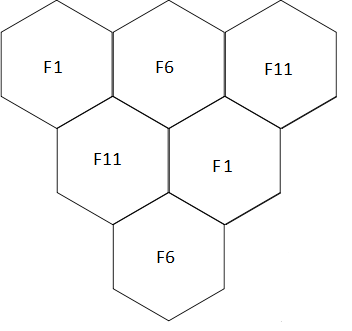There are some fundamental rules in wireless network planning for hotspots. In the case of 2.4GHz, there are only 3 non-overlapping channels: 1, 6, and 11.
All large wireless networks can be built from many clusters. One network cluster is formed from 3 different frequency cells. One cell is served by one access point.

Adjacent frequencies have to be different and separated by one neighboring frequency. This is an important aspect in wireless network planning. This type of network planning helps to avoid interference and improves link quality.
In the case of a 5GHz Wi-Fi network, more frequency channels are used. It helps to choose adjacent frequencies that are separated by two or three neighboring frequencies because this improves the quality of the network. 5Ghz network clusters could be formed from 7 or more different frequency cells.
It is necessary to know the required throughput when choosing the number of users to be managed by one AP. Throughput is dependent on the number of users connected to the base station. Ideally, an AP could provide 180Mbps with 30 connected stations. The throughput per station would be a 6Mbps simplex and a 3Mbps duplex.
